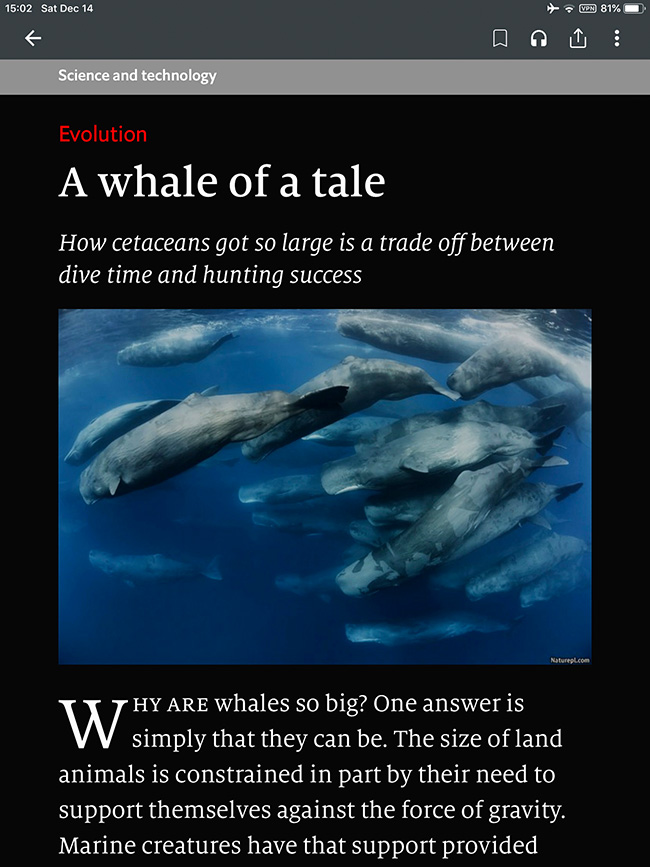The Economist magazine selected one of my photographs of a gathering of sperm whales (Physeter macrocephalus) to headline an article in the 16 December 2019 issue (Science and Technology section) about the reasons why some whale species are large.
Highlighted and discussed in the piece is recently published research by Dr Jeremy Goldbogen, Stanford University and colleagues. In short, the trade-off between dive time/ style and choice/ availability of food determines maximum size for a given species, with a major dividing line separating toothed and baleen whales.
Their results suggest that deep-diving toothed cetaceans, such as sperm whales and beaked whales, are swimming a fine line. The energy they derive from foraging dives is just enough to sustain their size. Baleen whales are better off energetically, assuming sufficient food supplies, as they do not need to dive as deep and are able to obtain substantially greater energy per meal.
Important note: my brief summary is a huge over-simplification. If you're interested in the details (which I cannot imagine anyone not being), please click over to Science magazine to read the summary and click here to download a PDF of the paper. It's good stuff.
The discussion presented in the paper make intuitive sense. The tables and charts are particularly interesting and informative, once you invest a little time understanding the axes and data presented. I totally geeked out.
